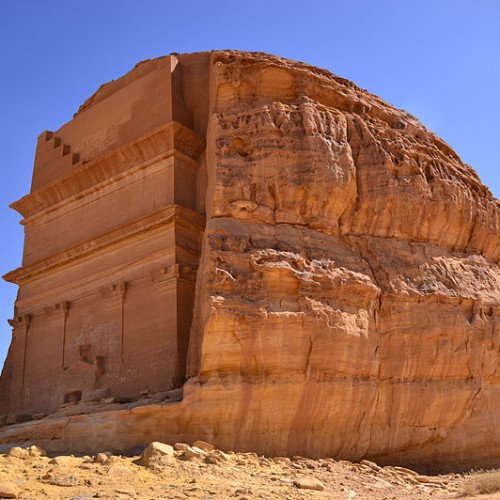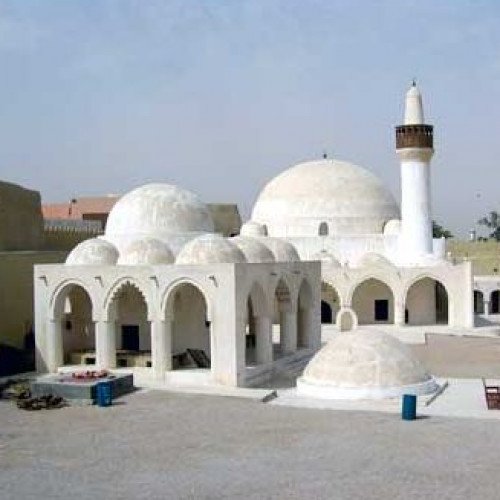Castles of "Saudi Arabia" HEGRA (MADA'IN SALIH) vs QASR IBRAHIM

HEGRA (MADA'IN SALIH)
Hegra (Ancient Greek: Ἔγρα), also known as Mada’in Salih (Arabic: مَدَائِن صَالِح, romanized: madāʼin Ṣāliḥ, lit. 'Cities of Salih'), or Al-Ḥijr (ٱلْحِجْر) is an archaeological site located in the area of Al-'Ula within Al Madinah Region in the Hejaz, Saudi Arabia. A majority of the remains date from the Nabatean kingdom (1st century AD). The site constitutes the kingdom's southernmost and largest settlement after Petra (modern-day Jordan), its capital. Traces of Lihyanite and Roman occupation before and after the Nabatean rule, respectively, can also be found. The Quran places the settlement of the area by the Thamudi people during the days of Salih, between those of Nuh (Noah) and Hud on one hand, and those of Ibrahim (Abraham) and Musa (Moses) on the other. However, a definitive historical chronology can not be obtained through the order of verses due to the fact that the Quranic chapters (see Surah) deal with different subjects in non-chronologic order. According to the Islamic text, the Thamudis were punished by Allah (God) for their practice of idol worship, being struck by an earthquake and lightning blasts. Thus, the site has earned a reputation as a cursed place—an image which the national government is attempting to overcome as it seeks to develop Mada'in Salih for its potential for tourism. In 2008, UNESCO proclaimed Mada'in Salih as a site of patrimony, becoming Saudi Arabia's first World Heritage Site. It was chosen for its well-preserved remains from late antiquity, especially the 131 rock-cut monumental tombs, with their elaborately ornamented façades, of the Nabatean kingdom.
Statistics for this Xoptio

QASR IBRAHIM
Qasr Ibrahim (Ibrahim Palace) is a historical castle and fort that is located in the north of Alqoat neighborhood, Hofuf, Al-Ahsa, Eastern Province, Saudi Arabia. Besides, it is called the dome Palace, AlQoat Palace or Ibrahim Castle. Ibrahim palace is the main architectural heritage from the Ottoman period of Al-Hofuf [1] that was a Turkish military barracks .[2] After that, the palace was taken and seized by King Abdul-Aziz Al Saud in April 13, 1913 (5th of First Jumada 1331 AH). The palace was constructed with a mosque that has a dome in 1555 (963 AH). During the next century, the palace was enlarged into a castle, prison and Turkish bath. In 2019, the Saudi Commission for Tourism and National Heritage has announced that the procedures of renovation of all parts of the palace have finished. This restoration process included rebuilding the fallen parts, painting the buildings and preparing a main square for the tourism activities and festivals. It was built in 1556 by Ali Ibn Ahmed Ibn Lawand Al-Burayki, the Ottoman governor of the time. The castle was renovated in 1801 by the Saudi governor Ibrahim Ibn ‘Ufaysan. Several historians believe that the castle was named after him.